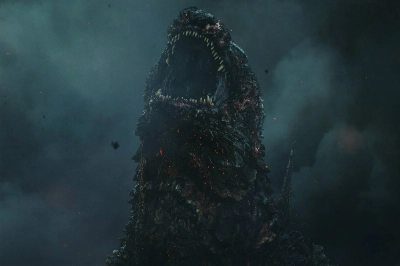Nearly 70 years since its debut, Japan’s most famous monster is back. “Godzilla Minus One” is the latest in a long line of films starring the titular beast and the first live-action production (from Japan, anyway) since 2016’s “Shin Godzilla.”
This new take on Godzilla by director Takashi Yamazaki, who also created the film’s visual effects, is a period piece set in postwar Tokyo. Fire bombings have reduced the city to rubble and its defenses to zero — so when a rampaging monster shows up, things go from bad to, well, minus one.
The film begins in the final days of World War II, when reluctant kamikaze pilot (can you blame him?) Koichi Shikishima (Ryunosuke Kamiki) fakes engine problems and lands on the fictional island of Odo for supposed repairs. At night, a dinosaur-like monster the locals call “Godzilla” attacks the garrison stationed on the island. Koichi is ordered to use his plane’s gun to kill the monster; when he hesitates, almost every human is killed. After Japan surrenders, Koichi returns to Tokyo wracked with survivor’s guilt and PTSD. Over the next few years, he and the city at large begin to slowly rebuild, but when Godzilla reappears (supersized by the American nuclear tests at Bikini Atoll), Koichi vows to get his revenge.





















With your current subscription plan you can comment on stories. However, before writing your first comment, please create a display name in the Profile section of your subscriber account page.